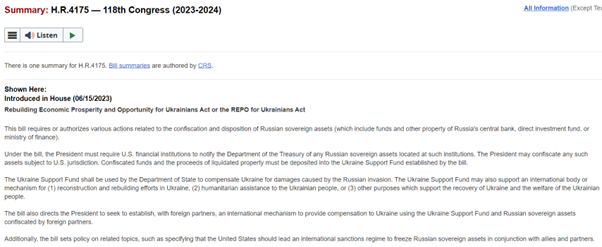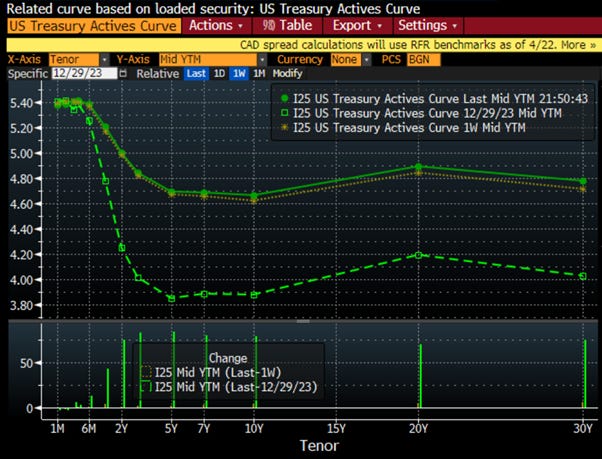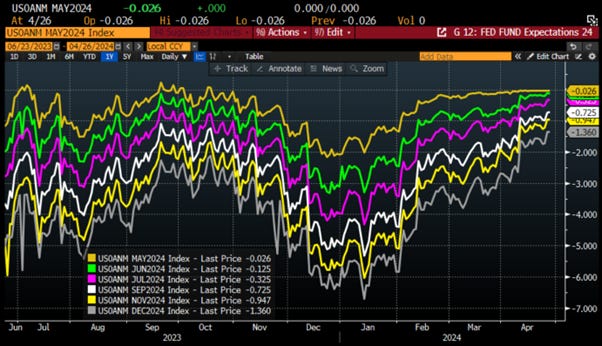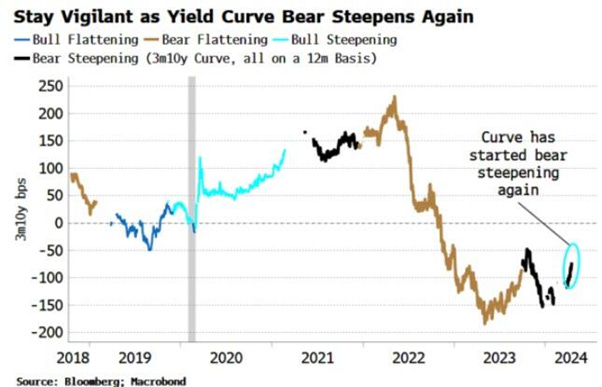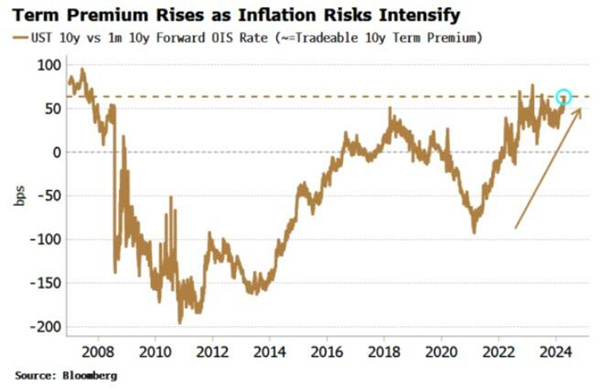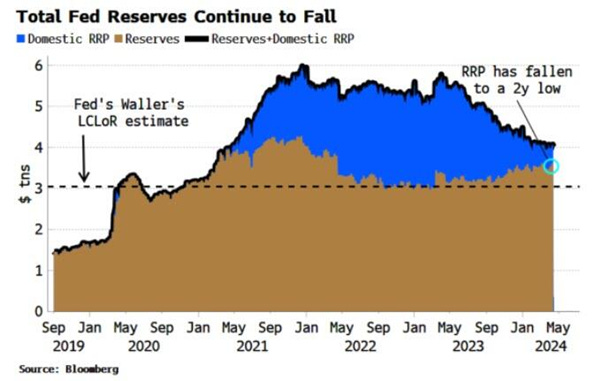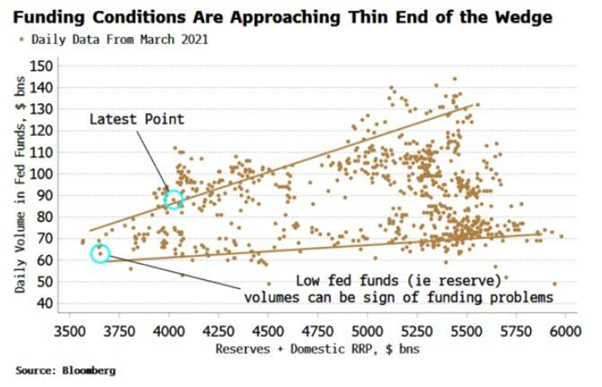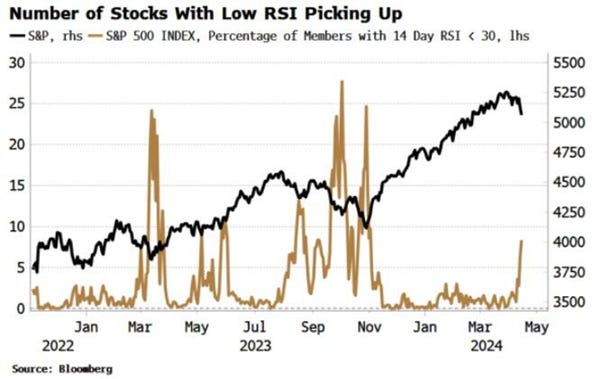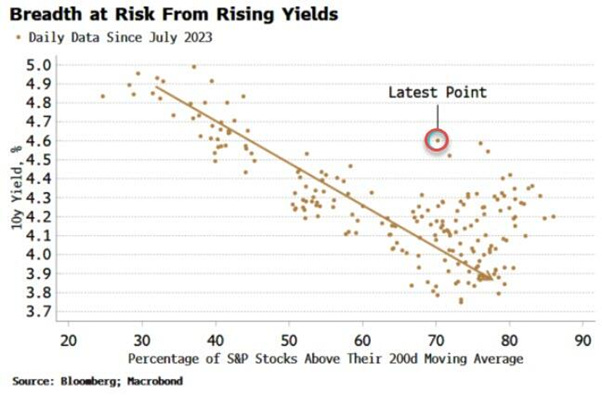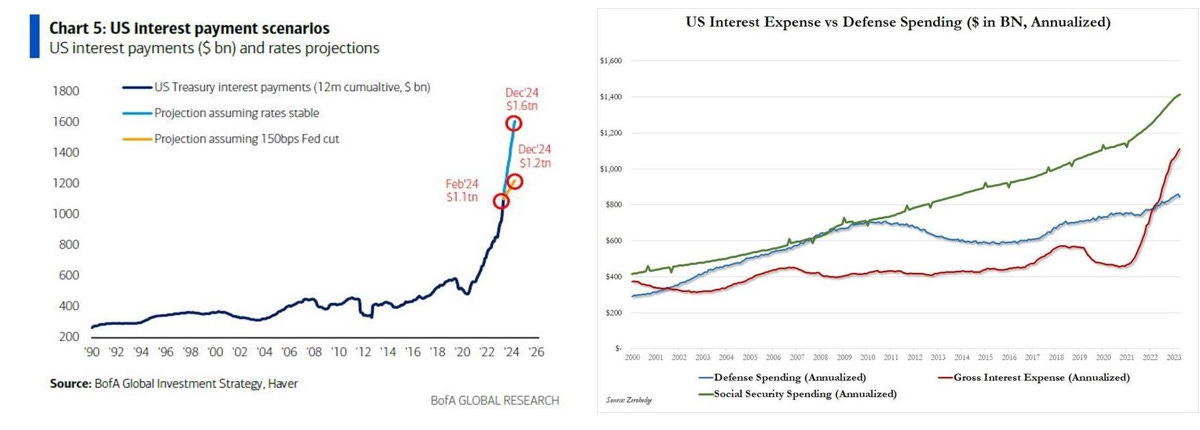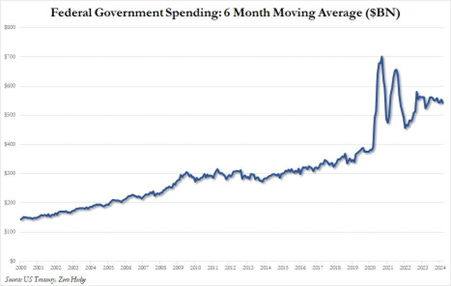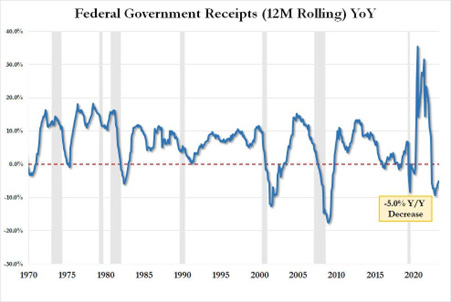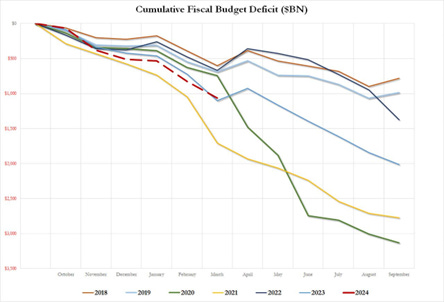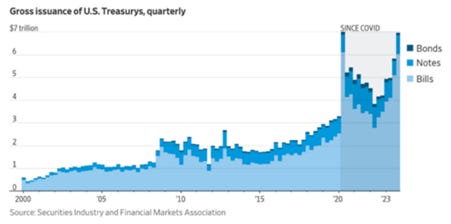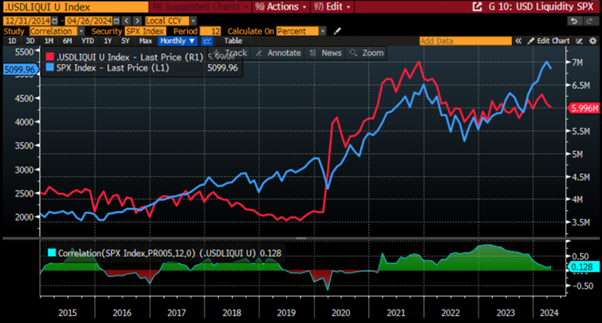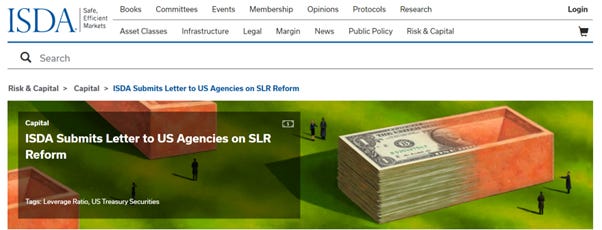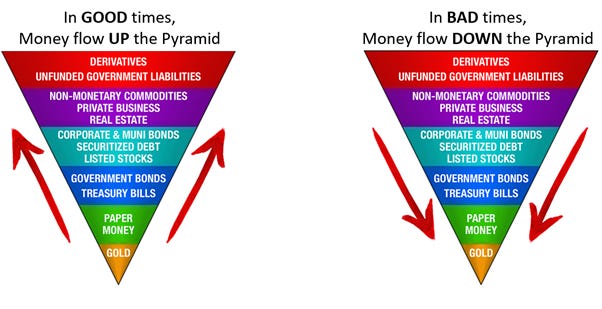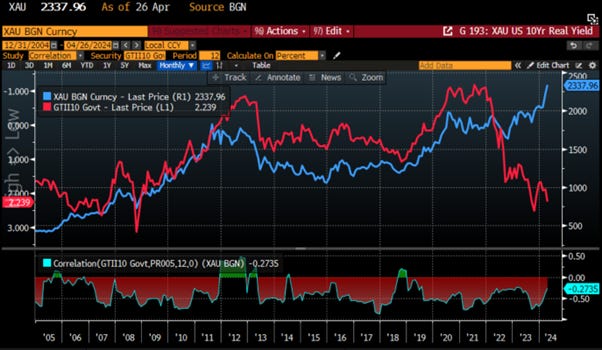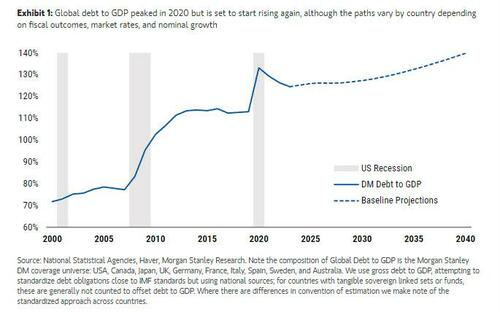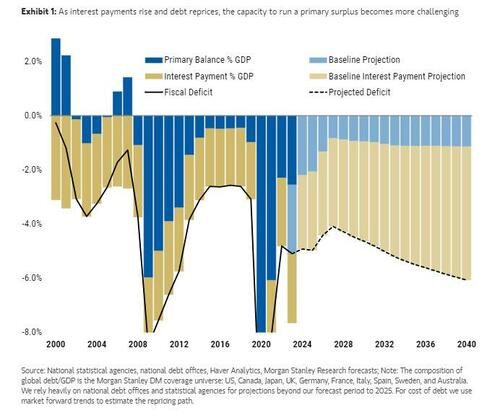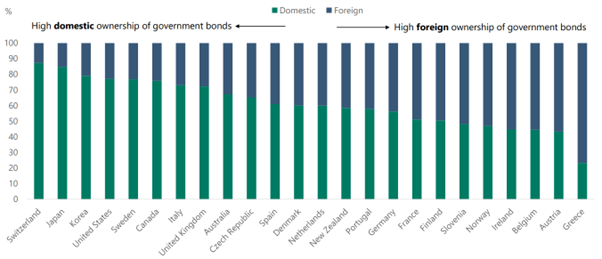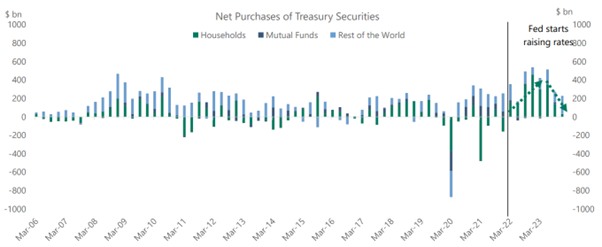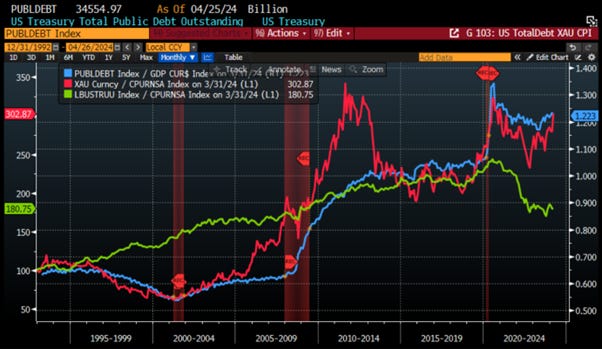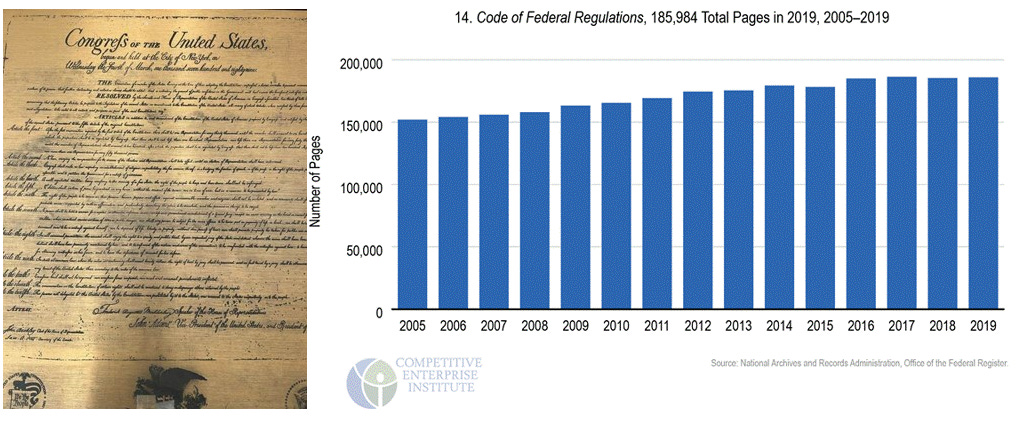Caught Off Guard FED?
Adding to the deterioration of the geopolitical tensions, on April 20th, the US congress when it passed the new aid package to support the so-called ‘war effort’ for Ukraine also approves the REPO Act, bringing a new dimension to the weaponization of the USD. This REPO Act allows the Biden administration to confiscate billions in Russian sovereign assets held in US banks. The REPO Act mandates actions related to the confiscation and disposition of these assets, directing U.S. financial institutions to notify the Treasury Department of any Russian assets they hold. Confiscated assets are to be deposited into the Ukraine Support Fund, which is supposed to compensate Ukraine for damages caused by the Russian invasion and supports reconstruction efforts, humanitarian assistance, and other purposes aiding Ukraine's recovery. The bill also aims to establish an international mechanism to tap into Russian assets in Europe for further compensation to Ukraine.
Not only is the REPO Act ILLEGAL, it is an escalation of the already weaponized USD, which will also trigger massive outflows from European and US banks from other countries that have chosen to oppose the Washington warmongers and green zealots. These countries are joining the BRICS bloc to create a new economic bloc independent of the so-called Western developed countries, which are heading toward underdevelopment in a new Stone Age under their scammed green climate change agenda.
With more data pointing to an inflationary bust, it should come as no surprise that the bear steepener has regained further momentum over the past week. While this Monday's US Treasury Quarterly Refunding Announcement could temporarily calm the bear steepener, Janet Yellen is running out of magic tricks to delay the inevitable: the un-inversion of the yield curve by the long end.
In this context, it is becoming increasingly evident that the FED will NOT cut rates in 2024 and that rate HIKES should soon become the baseline expectation. However, with the US presidential election just 6 months away, a rate hike before the November meeting seems unlikely but after everything could be on the table. Meanwhile, the 'Forward Confusion' driven by the myopic Wall Street consensus still anticipates more than one interest rate cut for the year, with a probability of 36% for the first cut to occur in September.
With the bear steepener emerging from its 'Halloween hibernation', concerns about a possible squeeze in US funding markets are resurfacing. While funding issues have been quiet this year, the current situation calls for renewed vigilance. This bear steepening exacerbates reserve depletion via a decreasing reverse repo facility (RRP) and raises government interest payments.
Over the past weeks, the curve has been bear steepening in the 3-12 month versus 10-year sectors, driven by the return of the inflation boomerang, pushing the term premium higher. This measure is approaching levels not seen since 2008, as indicated by tradeable forward OIS rates rather than the "academic" term premium.
A bear steepening poses specific challenges in the current environment. Firstly, the Reverse Repo (RRP) has played a critical role in bolstering risk assets amidst a rapid rate-hiking cycle and ongoing Quantitative Tightening (QT). The Treasury's shift towards short-term bills enabled Money Market Funds (MMFs) to access over $2.5 trillion in RRP liquidity to finance government operations. This prevented excessive public issuance from overshadowing other assets, supporting rallies in stocks and bonds. However, the decline of the RRP, possibly to zero, indicates that total reserves are nearing their lowest comfortable level, estimated at $2.5 to $3 trillion. Currently, domestic RRP levels have fallen to as low as $327 billion, marking the lowest levels since June 2021, with total reserves and RRP combined just over $4 trillion.
As Reverse Repo declines and yields on 6-month and 12-month bills rise, bills become more appealing to Money Market Funds compared to the RRP facility. Seasonal tax payments may have contributed to the recent decrease, but the facility's clear downward trend and growing volatility shouldn't be overlooked. Historically, perceived non-risks have transformed into real risks when vigilance wanes, which might be the case now. Previous funding episodes have witnessed a sudden drop in funding volumes just before a rapid increase, akin to a tsunami wave. A further decline in total reserves + RRP, along with FED funds volumes, could signal emerging funding problems.
For equity investors, higher yields pose a threat to US stock market breadth, worsening existing concerns. Breadth measures have declined to levels similar to those seen in November, with fewer stocks reaching new highs on the NYSE and S&P 500. Additionally, the percentage of S&P stocks with RSI below 30 has reached 6-month highs.
Since last summer, there's been a strong inverse relationship between the 10-year yield and the percentage of S&P stocks trading above their 200-day moving average. Currently, breadth on this measure is higher than expected based on this relationship, suggesting that further increases in yields could lead to more S&P stocks weakening.
Meanwhile, total US interest expenses continue to soar. After exceeding total annual defence spending about a year ago, the interest on US debt is on track to become the single largest government outlay, surpassing social security by the end of 2024, reaching $1.6 trillion. This makes interest payments the largest spending category in the US government.
Rising yields and their impact on US government interest payments compound the challenge posed by consistently high monthly outlays, which surged to $568 billion in March from $567 billion in February, marking the highest monthly spending total in 2024. This results in a 6-month moving spending average (for smoothing purposes) of $542 billion. One can only speculate about the trajectory of the chart below during and after the next recession.
On the government income front, the US federal government receipts, standing at $4.580 trillion on a 12-month rolling basis, have declined by 5%. This suggests that the US economy might not be as robust as the ‘Forward Confusion’ narrative spread by ‘Bidenomics’ suggests to investors and voters.
In a nutshell, the US doesn't have a tax collection problem but a spending problem. No amount of tax changes will fix it; higher taxes may only drive more billionaires to tax havens like Dubai. Putting the year-to-date deficit in context, in the first six months of fiscal 2024, the US deficit reached $1.065 trillion, just shy of the $1.1 trillion last year, which was the 2nd highest on record after the post-COVID 2021. Annualized, the total deficit is expected to hit $2.2 trillion in fiscal 2024, despite the US supposedly "growing" at around 2.5%. One can only imagine the GDP growth if the US didn't have such a wartime/crisis deficit.
The unsustainability of US fiscal policy is vividly illustrated by the fact that any great power spending more on debt service (interest payments on the national debt) than on defence will not remain great for long. This historical pattern, seen in past empires like Hapsburg Spain, ancien régime France, the Ottoman Empire, and the British Empire, is about to be tested by the US. According to the CBO, net interest outlays will the largest spending of the US government this year, and this gap is projected to widen rapidly in the coming years. By 2041, interest payments are expected to double the defence budget. Comparatively, between 1962 and 1989, interest payments averaged 1.8% of GDP, while defence spending was 6.4%.
Based on this data, it's no surprise that quarterly Treasury issuance, to be updated by Janet Yellen this coming Monday, is nearing peak COVID levels. Despite this, the current administration maintains that the country isn't in an emergency state and enjoys a healthy economy. Meanwhile, the swelling percentage of short-term bill issuance suggests difficulty in selling longer-term notes and bonds, a historical pattern seen in countries facing sovereign debt crises.
Apart from the FED funds rate, the balance sheet is another tool used by the FED to inject shadow liquidity behind the scenes. On March 20th, 2024, Powell indicated their readiness to reduce Quantitative Tightening to ensure sufficient liquidity in the system, referencing the 2019 Repo market blowout. This move is likely influenced by Lori Logan, the Dallas FED Governor, who is well-versed in monetary plumbing and recognizes its shortcomings. Currently, the FED is reducing its balance sheet by $60 billion per month via QT, with expectations that this amount will be halved soon. However, thanks to the use of RRP and the TGA, the USD liquidity index proxy has remained relatively stable since the end of 2022. This stability was a key driver of the equity market rally last year.
S&P 500 Index (Blue line) Versus Fed Balance Sheet – TGA - Reverse Repo Account (Red line)
Even further behind the scenes, on March 5, 2024, the ISDA urged the FED, FDIC, and OCC to reform the supplementary leverage ratio (SLR) by permanently excluding on-balance-sheet U.S. Treasuries from total leverage exposure, consistent with the scope of the temporary exclusion for US Treasuries implemented in 2020. In simpler terms, ISDA suggests a permanent framework for banks to continuously fund US Treasury issuance and deficits. This would essentially imply a ‘Ponzi QE infinity’, allowing banks unlimited capacity to purchase Treasury debt. While not yet implemented, the ISDA's proposal suggests a significant development towards complete debt monetization.
With the FOMC meeting on the horizon, investors are questioning whether the FED is coughed off guard in its 'Forward Confusion' narrative. While institutions may convey stability, it's the markets that truly reflect economic and financial conditions by pricing in future expectations. Despite attempts to paint a rosy picture, more investors are recognizing the monetary trap the FED finds itself in. Over the past 18 months, three crises have shaken sound money assets:
the UK Gilt crisis in October 2022,
the Silicon Valley Bank/Regional Bank crisis in March 2023,
and the abrupt rise in the 10-year U.S. Treasury yield above 5% in October 2023, prompting dovish talk and a soft pivot from the FED signalling an end to the rate hike cycle.
Gold, silver, and other commodities, albeit to a lesser extent, are reacting to the gargantuan fiscal deficit and an inevitable upcoming sovereign debt crisis, given their 'non-confiscability' and lack of counterparty risk, especially for Gold.
This move in ‘sound money’ asset is unprecedented, as evidenced by recent changes in the price of gold compared to the "real yield" on the U.S. 10-Year bond. It should be clear by now that gold has been sniffing out the global debt and fiscal problems that lie ahead for the US and other western governments. This trend has also been reinforced by the escalating war cycle, which has prompted foreign central banks, especially in the BRICS countries, to buy physical gold rather than US Treasuries since the weaponization of USD assets.
Gold Price (blue line); US 10-Year Real Yield (axis inverted; red line) & correlation.
Investors have to understand that Gold is and has always been a hedge against government risks, and this recent trend in gold is the best example of how investors are now clearly understanding that the FED has become impotent and interest rates no longer have such a strong impact given irresponsible government spending. This echoes the 1970s, when gold rose despite higher interest rates amid war and supply constraints. The change in gold price behavior also demonstrates that the economic conversation is changing, and investors are starting to understand that government bonds, once perceived as risk-free assets, are no longer free of risk. On that matter, the UK Gilt crisis in the Fall of 2022, when Liz Truss proposed tax cuts and spending increases, followed by a severe sell-off in the UK Gilt (bond) market and weakness in the British Pound, is the perfect example of the loss of trust investors have in public institutions. As a reminder, prime Minister Truss (via the Bank of England) was forced to reverse these policies to stop the market rout, and she also lost her job.
Therefore, it's increasingly clear that the issue of debt sustainability is looming and likely to be the trigger of the next crisis sooner rather than later. During COVID, the debt/GDP ratio for much of the developed world skyrocketed. Fiscal expansion pushed debt higher while GDP contracted, impacting both the numerator and denominator. The recovery from the COVID recession brought some balance as rapid nominal GDP growth, fuelled by inflation, mitigated some of the denominator effect. However, as growth slows below trend, attention will turn to the numerator, or debt level. Debt levels in developed markets suggest a significant risk of unsustainability.
The uncomfortable truth is that there's no simple answer to the debt/GDP challenge. Debt sustainability isn't determined by a clear threshold; it's a nuanced issue. With the average maturity of developed market sovereign debt between 5 and 10 years, governments are still adjusting to higher nominal rates after a decade of low or negative rates. This adjustment will lead to rising debt-servicing costs. Rough projections indicate that interest expenses as a share of GDP globally are expected to increase from 2.5% to 3.5% on average by the end of the decade.
The gap is most evident in countries with the highest debt levels, such as the US, France, and the UK. France, in particular, exemplifies the looming debt trap. As the second-largest economy in the euro area, its fiscal stability concerns could have broader ramifications. Recent figures show France's debt/GDP surpassing Spain's but remaining below Italy's, which is nearly 140%. Italy's fiscal position has been a market concern for decades, indicating there's no simple threshold measure. Italy would require a primary surplus to stabilize its debt level, with its average primary surplus at 1.5% during the post-GFC, pre-Covid decade. The bad news for France is that contrary to Italy, the US, Switzerland, Japan, and Korea, most of its debt is own by foreigners which explain while France will be among the firsts to fall into the incoming debt trap.
The good news for the US is that it has high domestic ownership of its government bonds. However, while the FED was raising rates, households were significant buyers of US treasuries, though this trend has started to reverse as the economy slowdowns.
The bad news for holders of US treasuries is that a higher debt-to-GDP ratio is inflationary. In an environment where debt-to-GDP is set to rise and reach new historical highs, on an inflation-adjusted basis, Gold, NOT government bonds, will emerge as the new antifragile asset.
US Total Debt to GDP ratio (blue line); Value of $100 invested on December 1992 in Gold (red line) and US Bonds (green line) adjusted to US CPI.
The rising total debt-to-GDP ratio highlights the stark contrast between the principles that drove the founding fathers of the United States to seek independence from the British monarchy and the current state of affairs. This contrast is best exemplified by comparing the Constitution of the United States, which spans a mere four pages, to the Code of Federal Regulations, which has ballooned to over 185,000 pages.
Read more and discover how to position your portfolio here: https://themacrobutler.substack.com/p/caught-off-guard-fed
At The Macro Butler, our mission is to leverage our macro views to provide actionable and investable recommendations to all types of investors. In this regard, we offer two types of portfolios to our paid clients.
The Macro Butler Long/Short Portfolio is a dynamic and trading portfolio designed to invest in individual securities, aligning with our strategic and tactical investment recommendations.
The Macro Butler Strategic Portfolio consists of 20 ETFs (long only) and serves as the foundation for a multi-asset portfolio that reflects our long-term macro views.
Investors interested in obtaining more information about the Macro Butler Long/Short and Strategic portfolios can contact us at info@themacrobutler.com.
Unlock Your Financial Success with the Macro Butler!
Disclaimer
The content provided in this newsletter is for general information purposes only. No information, materials, services, and other content provided in this post constitute solicitation, recommendation, endorsement or any financial, investment, or other advice.
Seek independent professional consultation in the form of legal, financial, and fiscal advice before making any investment decisions.
Always perform your own due diligence.


